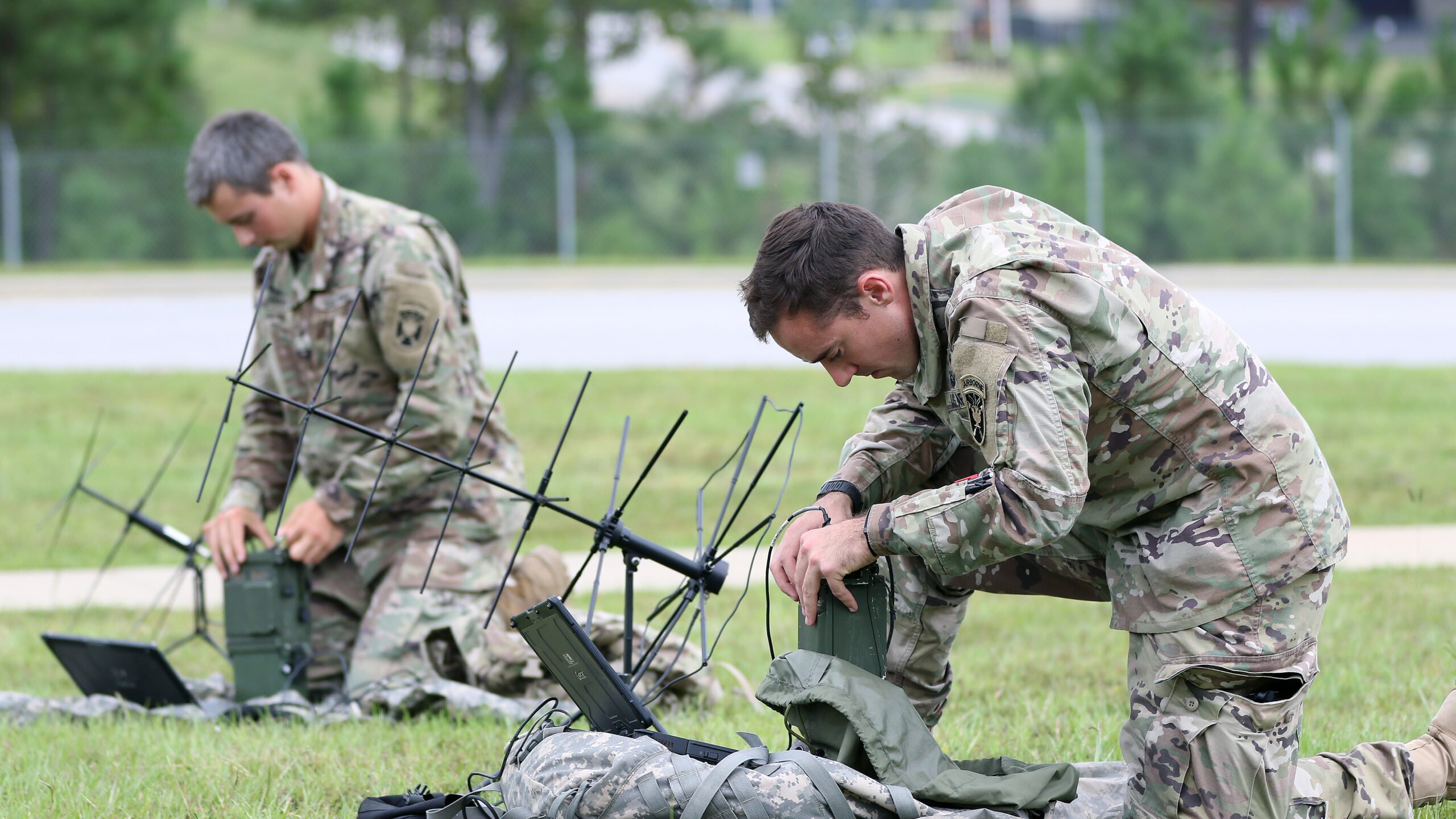
Soldiers assigned to the U.S. Army John F. Kennedy Special Warfare Center and School, who are in the Special Forces Communications Sergeant course, practices using a PDA-184 computer and an AN/ PRC-117G satellite radio during training at the Yarborough Training Complex at Fort Bragg, North Carolina August 29, 2019. (U.S. Army photo by K. Kassens)
AUSA 2022 — The Army will be putting heavy focus on fast-tracking industry tech into operations for this year’s Project Convergence sensor-to-shooter campaign, experimenting with what service officials called a “technology gateway” scenario. To judge their effectiveness, the service is also piloting a new “rubric” of rigor.
The Army needs to “put a timeline to allow our industry partners to see where our gaps may be, use their technology and their understanding to develop potential solutions and then bring them out,” Brig. Gen. Guy Jones, deputy director and chief of staff of Army Futures Command’s Futures and Concepts Center, said at the annual Association of the US Army conference today.
Jones said the new technology gateway scenario is meant to “pull in” industry partners early to understand their technologies and how the service can best integrate them.
According to slides accompanying Jones’ remarks, the Army has three goals with the new gateway scenario: integrate industry innovation with ongoing science and technology (S&T) investments; identify emerging capabilities that overcome experimental gaps; and build service-industry collaboration for further experimentation, research and applied S&T.
Maj. Gen. Miles Brown, commander of the Army Combat Capabilities Development Command, said that while looking over the Project Convergence landscape over the last few years, the Army realized there was a need to maintain a “nexus” for industry to enter.
While the gateway is meant to start the conversation early, the Army just in the middle of last month said it conducted science and technology evaluations with 53 technologies, followed by one-on-one engagements with industry partners. Some of those technologies were pushed into two maritime-centric and land-centric experiments, named scenario A and B, respectively. Brown added the Army is piloting a “rubric that puts a sufficient rigor” against those technologies.
“The takeaway from this is we now… have a pilot going for a sprint [Cooperative Research and Development Agreement] CRADA and we’ll be able to push CRADAs with our eight centers and labs inside the Combat Capabilities Development Command,” Brown said.
Those CRADAs will also be leveraged in other experiments like the annual Network Modernization Experiments, or NetModX, “that will continue to inform in terms of data collection analysis,” he added.
The Army also has a list of anticipated outcomes for this year’s Project Convergence, including getting recommendations for investing in emerging technologies and divesting programs that don’t provide use and establishing a baseline network architecture. This year’s experiment also includes the UK and Australia, and the Army wants to develop a resilient mission partner environment that allows allies and partners interoperability, according to PowerPoint slides shown during the panel.




















